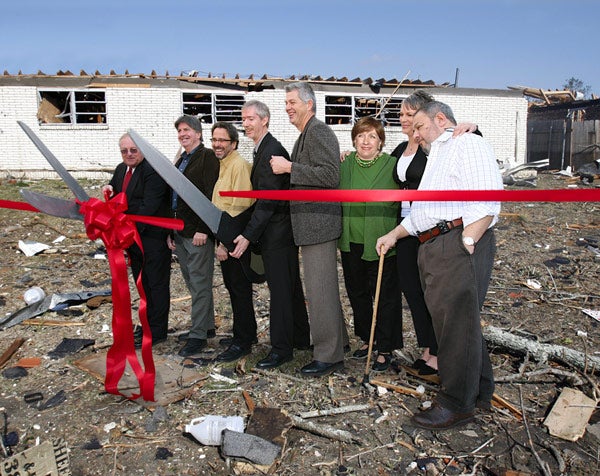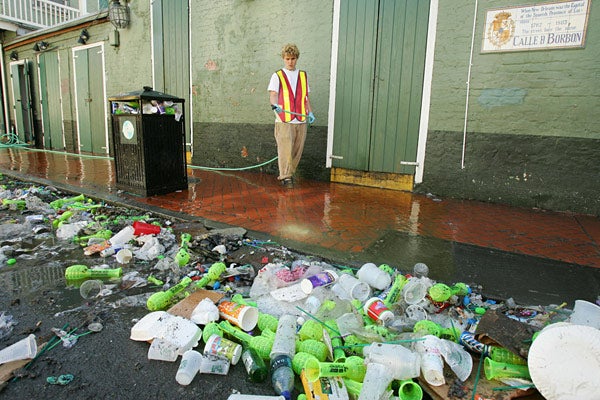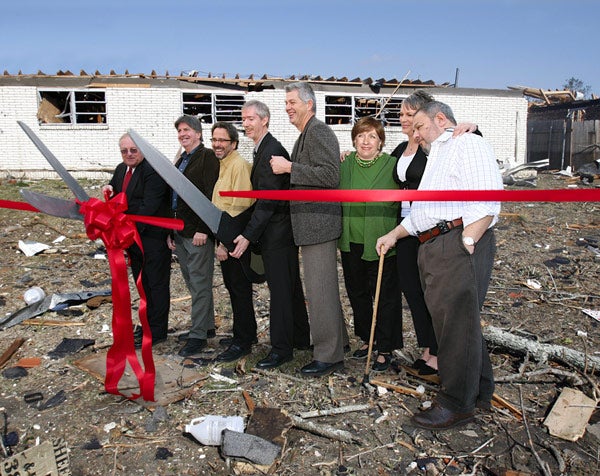NEW ORLEANS—After an unprecedented 18-month cleanup and repair effort supervised by the Federal Emergency Management Agency and several state and local government bureaus, Undersecretary for Federal Emergency Management R. David Paulison announced Monday that the city of New Orleans has been successfully returned to its pre–Hurricane Katrina state of decay and deterioration.

“Our job here is done,” said Paulison, who was joined by Louisiana Gov. Kathleen Blanco in a ceremony along the banks of the Industrial Canal. “Our beloved Big Easy has its soul back. The downtown shops are open and in full violation of code, the nightlife is alive with the sound of violence, and the streets are once again safe for poverty and vice.”
The $41 billion restoration of the city’s hallmark abandoned buildings, shacks, vacant lots, and standing trash piles was among the most complex and painstaking ever undertaken. Starting just four weeks after the August 2005 hurricane, workers recovered millions of pieces of flood-damaged debris, cleaned them of sediments and chemicals, and then replaced them where they were originally found.
The work, however, did not proceed without controversy, often grinding to a halt as preservationists quarreled in court over which sections of rot, toxic chemical compounds, PCBs, bacteria, and pathogens predated Katrina.

Despite the bitter disputes, Blanco declared the restoration project an “unqualified success,” and invited the estimated 200,000 New Orleanians who still reside outside the city to return.
“We’ve done our best to ensure the city is as well off as it was before Katrina hit,” Blanco said. “It’s all back—the same abandoned cars, the broken bottles, the spent shotgun shells, the rat colonies, even the used diapers on the front lawns. People of New Orleans, welcome home.”
The most impressive progress was made in the Ninth Ward, the lowest-lying and most devastated section of New Orleans. Due to severe water and mold damage, the difficult decision was made to gut or tear down a majority of the neighborhood’s houses, then laboriously reconstruct them to their previous dilapidated condition seven feet below sea level. Many returning residents, including custodial worker and father of four Stanley Gibson, 41, expressed shock at the success of the rebuilding efforts, saying he “never dreamed in a million years [he] would be going back to that place.”
“Before the storm, I lived paycheck to paycheck in a run-down two-bedroom house,” Gibson said. “I never thought I’d see that house again, but here it is—same sagging roof, compromised foundation and everything. Someone even found my car and put a quarter of a tank of gas back in it.”
As part of the citywide restoration efforts, downtown medical facilities that flooded during Katrina, such as Charity Hospital, were drained, repaired, and meticulously under-funded based on past financial records and other historical evidence. Hospital officials said the facility could be ill-prepared for overcrowding by uninsured and indigent patients as early as next week.
Public schools were fully reopened last Monday after being stocked with outdated textbooks and refurbished chairs for every student to share.
Even New Orleans’ world-famous French Quarter was given a much-needed boost, with the flood-related detritus covering Bourbon Street cleared and replaced with discarded plastic beads, vomit, and used condoms.
“It’s like nothing has changed,” said Covenant House director Michelle Beauchamp, whose organization received FEMA funds to rebuild and reopen a homeless shelter. “The workers rebuilt all 25 rooms exactly as small as they used to be, and soon we’ll be ready to serve New Orleans’ 10,000 homeless men, women, and children again.”
Residents noted that the same attention to detail could be seen in the levees and floodwalls, which were restored by the Army Corps of Engineers to their “classic” pre-Katrina condition.
Despite FEMA’s official declaration of completion, not all facets of New Orleans squalor have been restored. City officials say the return of New Orleans citizens is essential to the survival of the city’s crumbling economy and renowned 25 percent poverty rate. And in a sharp and historically inaccurate contrast, federal aid continues to flow into the city, preservationists say.
After several years of bureaucratic restructuring and appointee shuffling, FEMA assured New Orleans residents that it, too, has regained its former level of quality.
“If another hurricane hits New Orleans, we will be just as prepared to help as we were before Katrina,” Paulison said.







